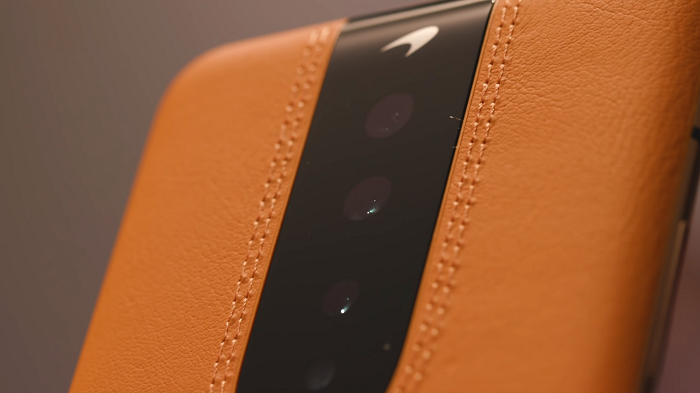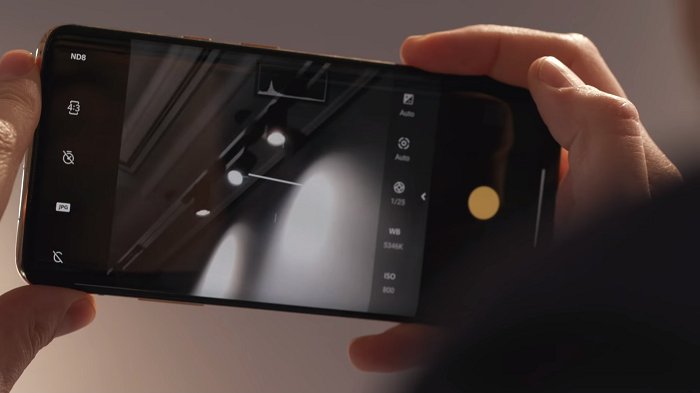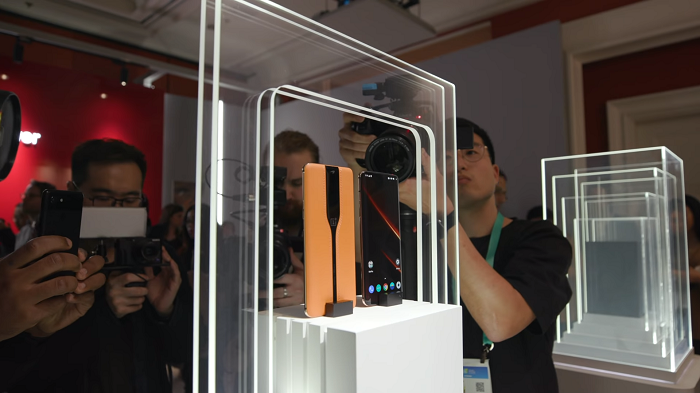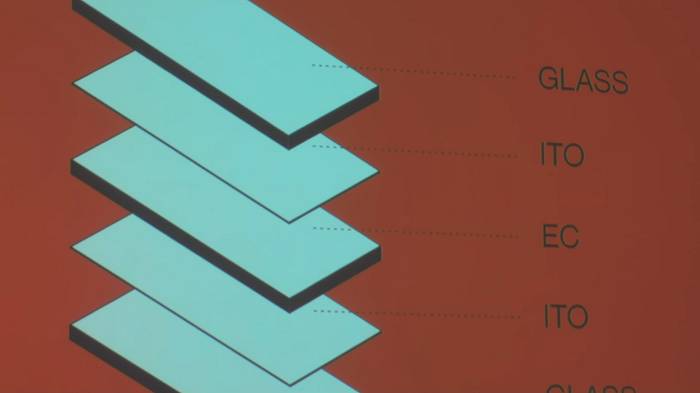OnePlus is doing something new this year. OnePlus is unveiling a phone here at CES, but you’re not gonna be able to go and buy it. It’s just a concept phone. In fact, that’s what it’s called. The OnePlus Concept One. And the idea behind this phone, with its black glass strip and its orange papaya stitched leather body is that they can hide the cameras with this glass that can electronically switch between opaque and transparent.

The idea is that it just makes the phone look nicer because instead of seeing a bunch of camera lenses, you see a black pane of glass. OnePlus says that they can switch between opaque and transparent in 0.7 seconds, which is about the time it takes to open the camera app in the first place. So that’s cool, I guess.
Actually, actually it is pretty cool. But this new technology has a practical use too because you can set it to be a neutral density filter. So when you’re outside taking a shot of something really bright, it makes the glass a little bit darker so that all your photos or videos aren’t completely blown out. To use a neutral density filter, you have to go into Pro Mode on the camera app.

When you do, you’ll see a little button that says ND8. You tap that, and it toggles the density filter on and off. You can’t adjust how, you know, strong or opaque it is, but it does seem to work. Obviously, we’re gonna need to fully test this thing in order to say for sure, but of course, we can’t fully test this thing because it’s just a concept phone.
One more thing
It’s opaque, but it’s not like opaque opaque. If you tilt the phone around in the light a little bit, even when the thing is supposed to cover the camera lenses, you can still kinda see the camera lenses from time to time. That’s fine. Again, this is just a concept. OnePlus says that they have to do a lot more testing before they can put it on a real production phone. There’s a lot of extra work that they have to do, and you know what, this is silly, right?

They’ve been developing this thing for 18 months just so that they can cover up the camera lenses on a phone. And that might be necessary later on in the future when we get to four, five, six camera lenses in the back of the phone. That could look really horrifying, and so you might actually want this, but right now, it’s silly. But this is what CES is for.
I mean, we saw a TV that rotates into portrait mode, so yeah, they’re allowed to make something weird on a phone too. So let’s talk about how this actually works.

It is electrochromic glass, which is two panes of regular old glass, and then inside is an electrochromic layer that can switch from transparent to opaque when electricity is applied to it. It’s the same technology that gets used on a lot of sunroofs, in fact, it’s the same technology that gets used in McLaren sunroofs, and OnePlus says they work with McLaren to develop this technology and shrink it down to phones. And shrinking it down is actually what took a lot of work.
They had to get the panels of glass that sandwich it really, really thin, and they had to get the electrochromic layer really, really thin, and they had to make it all work faster than it usually does when it’s just on a sunroof. So again, they say it can happen in 0.7 seconds, and they manage to make this glass 0.35 millimeters thick, which is, they claim, the thinnest electrochromic panel ever, and the fastest electrochromic panel ever.
Electrochromic is really hard to say like four times in a sentence. So why does this concept need to exist? Is it really that important to be able to cover up your camera lenses or get a software-defined ND filter. Well a software-defined ND filter actually sounds pretty dope on a camera, but what this is really for is to convince you that OnePlus does innovation and that OnePlus is super cool. That’s why they partner with McLaren. That’s why they use like the McLaren papaya orange stitched leather. It’s their whole vibe, their whole ethos is to be cool, and they think this looks cool, and who am I to say they’re wrong?